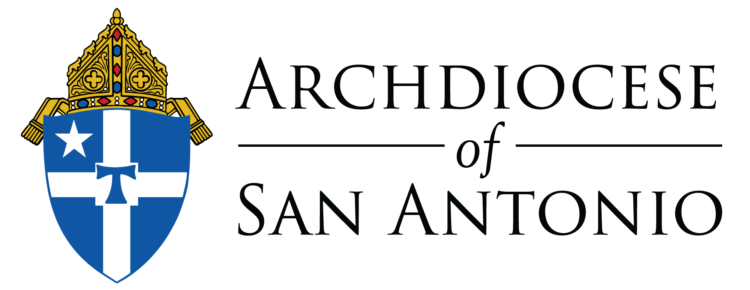1. I am delighted to be with you today to reflect on a subject that is as old as history itself and yet is a subject of the most current urgency. I am referring to the issue of bringing up peace to a divided and violent world.
2. Seen from the perspective of its permanence, the problem of peacebuilding can motivate the cynical reaction of those who affirm that conflict is a permanent feature of human existence. They would say that confrontation amongst human beings is unavoidable, and that there is nothing we can do about it except look out for ourselves and our individual or group interests.
3. The interesting thing about a statement like that lies both in the partial truth that it contains, as well as what it fails to grasp about the nature and destiny of humankind.
4. For starters, if we want to live in peace, it is essential to recognize that, in this life, conflict is indeed a permanent feature of human existence.
5. Because we are unique and unrepeatable social creatures, endowed with reason, freedom, and passions, human beings are destined to quarrel with each other throughout their lives and in all the different spheres of their existence. We cannot hope to be unique free creatures without accepting the fact that differences will constantly rise among us.
6. Nevertheless, what the cynic fails to understand about human nature is that conflict is not an excuse for violence. The inevitability of our differences and confrontations does not condemn us to become enemies, who need to be controlled or destroyed. There is always something we can do to solve our differences peacefully.
7. Seen from this perspective, as Pope Francis likes to point out, conflict can become a positive element in the life of society. It allows people to see things from a perspective different than their own, get a better understanding of reality, and recognize the positive role that others are called to play in their lives.
8. In a sense, conflict saves us from the temptation of thinking that we are always right. In fact, it saves us from the temptation of thinking that we are like the gods or heroes of the ancient past, who were believed to be entitled to exercise their power, and even inflict death on others, just because they had a more prominent position.
9. This brings us to the current state of things, under which the need to learn how to deal with conflict – and live in peace in a polarized world – has become the most urgent responsibility of our generation.
10. At the heart of Pope Francis’ proposal for peace lies the notion of fraternity. For Pope Francis, fraternity is an essential part of our existence as social beings who, by definition, require the presence of others in our lives. The Pope recognizes this as a profound aspiration, present in the heart of all individuals, and in all nations and cultures around the world, starting with (quote) “those who most keenly suffer (from) its absence.” (end of quote)1
11. In the words of the Pope: (quote) “In disagreements, which are also an unavoidable part of life, we should always remember that we are brothers and sisters, and therefore teach others and teach ourselves not to consider our neighbor as an enemy or as an adversary to be eliminated.” (end of quote)2
12. According to Pope Francis, “the story of Cain and Abel teaches that we have an inherent calling to fraternity, but also the tragic capacity to betray that calling.” (end of quote)3
13. Now, it is important to note that the kind of fraternity that Pope Francis recognizes as an essential element of human existence is not something that human beings are to achieve through the sole use of their own strength and resources. In other words, there are no shortcuts to peace, which would enable us to avoid the path of faith and our need for God’s grace.
14. Fraternity is a call that comes from God and for which God has (1) made man, (2) redeemed him, and (3) filled him with his Holy Spirit. It is, yes, a profound desire and a choice that human beings need to make on a daily basis. However, it is not a battle humans have to fight by themselves. Being together is not the same as being united. We must work to unite, while hoping to be brought to unity.
What is the role and mission of the bishop in this work for the kind of unity which can only be fulfilled by the Holy Spirit?
15. For the Church, unity is not simply a task, but a manifestation of its essence. Her source is the Triune God. As the universal sacrament of salvation, the Church is called to be a beacon of unity in the world. As the Catechism teaches: (quote) “The unity of Christ and the Church, head and members of one Body, also implies the distinction of the two within a personal relationship.” (end of quote)4
16. “Above all,” says the Letter to the Colossians, “charity ‘binds everything together in perfect harmony.” (Col 3:14). And the Catechism goes on to say: (quote) “But the unity of the pilgrim Church is also assured by visible bonds of communion: profession of one faith received from the Apostles; common celebration of divine worship, especially of the sacraments; apostolic succession through the sacrament of Holy Orders, maintaining the fraternal concord of God’s family.” (end of quote)5
17. With regards to this last point, it is worth quoting relevant teaching of the Second Vatican Council: (quote) “The Roman Pontiff, as the successor of Peter, is the perpetual and visible principle and foundation of unity of both the bishops and of the faithful. The individual bishops, however, are the visible principle and foundation of unity in their particular churches, fashioned after the model of the universal Church, in and from which churches comes into being the one and only Catholic Church. For this reason, the individual bishops represent each his own church, but all of them together and with the Pope represent the entire Church in the bond of peace, love, and unity.” (end of quote)6
18. As leaders, we are always at risk of becoming detached from reality. Pope Francis warns that there has to be continuous dialogue between ideas and reality, lest the former become detached from the latter. “It is dangerous to dwell in the realm of words alone,” he says, (quote) “of images and rhetoric. (…) realities are greater than ideas. This calls for rejecting the various means of masking reality: angelic forms of purity, dictatorships of relativism, empty rhetoric, objectives more ideal than real, brands of ahistorical fundamentalism, ethical systems bereft of kindness, intellectual discourse bereft of wisdom. Ideas – conceptual elaborations – are at the service of communication, understanding, and praxis. Ideas disconnected from realities give rise to ineffectual forms of idealism and nominalism, capable at most of classifying and defining, but certainly not calling to action. What calls us to action are realities illuminated by reason.” (end of quote)7
19. The weight of the responsibility is daunting. Who could stand it? Faced by our own human weakness, bishops can find consolation and hope in the example of the apostles themselves. As they were patiently guided by the Lord himself before his Ascension, and by the Holy Spirit in the early days of the Church, God’s central role – as the Shepherd of his Holy People – shines through their human limitations.
So now, through my own human experience, allow me to share a testimony to the work of the Holy Spirit, which I have witnessed through my own episcopal ministry:
20. Uvalde:
- (Story of the other teacher who broke the window).
- (Private conversation with the children of teacher Irma Linda and her husband, José Antonio “Joe” García: Liliana, Alysandra, José & Cristian).
- (The photographer at the scene of the crime).
- (Surviving children at Mass: the centrality of the Eucharist).
- (First day of school, when children coming from public school get together with private school students).
- (Glass sculptures by Gini Garcia)
- (2 years)
- (No substantial changes in the city or school. No political will to take responsibility, although money is no issue).
- (The vision of the Church is to foster and encourage goodness:)
- (Religious sisters visiting homes).
- (Re-emergence of faith).
- (Open attitude from the parish to the city).
- Pope Francis recently said: “The Church, as Mother and Samaritan, is always called upon to spiritually and organically accompany the families of victims who have lost their lives to violence, to accompany the sick, to accompany those who experience the scourge of addiction, along with their families, to accompany those who find themselves in prison and then need a path to reintegration, to accompany those who live in situations of extreme vulnerability. The parish is the Church that makes herself close, it is the community where everyone can feel loved. For many vulnerable children, adolescents and young people it will perhaps be the only family experience they will have the opportunity to get to know. In these times, love, charity, will be the most explicit proclamation of the Gospel for a society that feels threatened.”
21. Immigrants:
- (Visit at hospital: looking for anonymous patients).
- (Mass at San Fernando Cathedral with representation from 4 countries).
- (José Luis: boy from Oaxaca, the only one who lived to tell what happened at the back of the trailer truck).
- (Separation of families).
- (Rio Grande Buoys).
- (Tex-Mex meeting in Ciudad Juarez).
In conclusion:
22. Reality – if we find the courage to engage it through faith – has the power to dispel the most dangerous form of deception: the myth. It can free us from prepackaged interpretations. Nonetheless, it demands that we renounce the comfort of uninformed opinion, or even worse, the blind endorsement of someone else’s opinion. It requires the discomfort of the kind of thought that is inspired by coming into contact with the flesh of those on the outskirts of society. But just like there is no shortcut to the path of faith, the One with whom we relate through faith requires us to sow peace on the muddy roads travelled by his children, who are the victims of violence.
23. Synodality and solidarity – where everyone has a role to play under the guidance of the central character who is Jesus – are the two sides of the road to peace.
1Message for the celebration of the World Day of Peace on January 1, 2018, N. 1.
2Message for the celebration of the World Day of Peace on January 1, 2014, N. 8.
3Ib., N. 2.
4Catechism of the Catholic Church, N. 796.
5Ib., N. 815.
6Lumen Gentium, N. 23.
7Evangelii Gaudium, N. 231-232.













